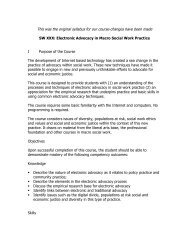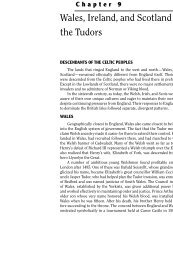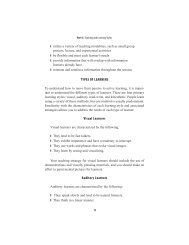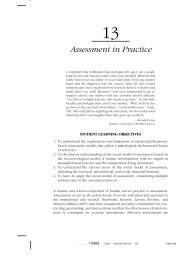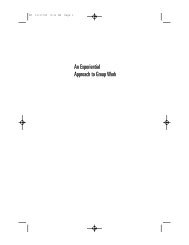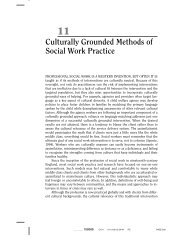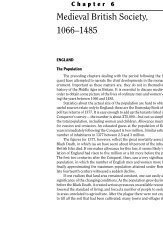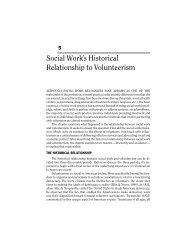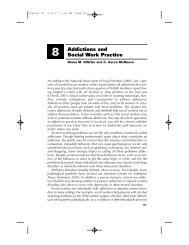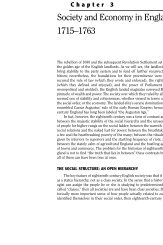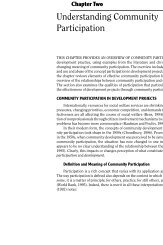Elements of Short-Term Existential Intervention - Lyceum Books
Elements of Short-Term Existential Intervention - Lyceum Books
Elements of Short-Term Existential Intervention - Lyceum Books
Create successful ePaper yourself
Turn your PDF publications into a flip-book with our unique Google optimized e-Paper software.
Chapter 3 <strong>Elements</strong> <strong>of</strong> <strong>Short</strong>-<strong>Term</strong> <strong>Existential</strong> <strong>Intervention</strong> 27<br />
◆ As I view the world in relation to my life, the world: completely confuses me<br />
(1)—fits meaningfully with my life (7)<br />
◆ With regard to suicide, I have: thought <strong>of</strong> it seriously as a way out (1)—never<br />
given it a second thought (7) (Crumbaugh & Maholick, 1964)<br />
A score below 93 indicates a serious disruption in the client’s awareness <strong>of</strong> purpose<br />
and meaning in life. A score between 93 and 111 suggests that the person is in<br />
some danger <strong>of</strong> experiencing an existential-meaning vacuum, and a score above 112<br />
indicates that the person is experiencing a sense <strong>of</strong> meaning and purpose.<br />
The PIL is one means <strong>of</strong> assessing a client’s sense <strong>of</strong> meaning and purpose; it is<br />
not a necessary part <strong>of</strong> the assessment. This scale should be used sparingly and<br />
should be reserved for situations in which it seems that a client would benefit from<br />
concrete evidence <strong>of</strong> his or her meaning status.<br />
EMOTIONAL PROBLEMS AND THE THREE DIMENSIONS OF BEING<br />
In short-term existential intervention, a crisis can be understood as any condition<br />
or occurrence that disrupts the manifestation <strong>of</strong> a client’s existence on any or<br />
all three <strong>of</strong> the dimensions <strong>of</strong> existence (Lantz, 2000, 2001).<br />
Emotional pain is defined simply as a person’s negative cognitive and affective<br />
reactions to a serious problem or crisis (Grove & Haley, 1993). Such pain is <strong>of</strong>ten<br />
not well tolerated unless the person is fortunate enough to have access to supportive<br />
and empathic friends and family. When the emotional pain is overwhelming, or<br />
the person in crisis lacks sufficient emotional support, the person will use methods<br />
<strong>of</strong> emotional defense to cover, repress, or deny the significance <strong>of</strong> the problem<br />
(Frankl, 1969; Lantz, 2000).<br />
A number <strong>of</strong> existential practitioners (Frankl, 1969; Lantz, 1978, Yalom, 1980)<br />
have described three primary methods <strong>of</strong> defense that are used to repress emotional<br />
pain:<br />
1. Some people transform normal assertiveness into problematic patterns <strong>of</strong><br />
aggression to move against situations and individuals that remind them <strong>of</strong><br />
their problem experiences and pain.<br />
2. Some people transform normal independence into problematic patterns <strong>of</strong><br />
avoidance to move away from situations and individuals that remind them<br />
<strong>of</strong> their pain.<br />
3. Some people transform normal intimacy patterns into patterns <strong>of</strong> dependence<br />
to move toward others in a way that gets those other people to take responsibility<br />
for overcoming their problems.<br />
These three defense patterns can effectively cover emotional pain, but they also<br />
disrupt the person’s ability to master and transform the pain into new and healthier<br />
manifestations <strong>of</strong> existence. In other words, each method <strong>of</strong> defense protects the



